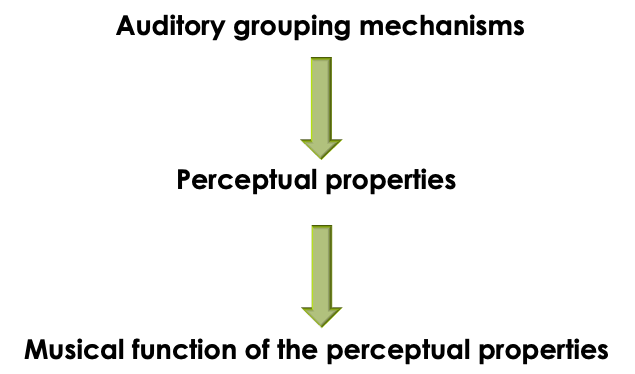TOGE | MTO — Example 1
Auditory grouping gives rise to events from which perceptual properties are extracted, which then acquire musical functions within a given sonic context
TOGE | MTO — Example 2
Auditory grouping processes and the resulting perceptual qualities and corresponding orchestral effects. [Adapted from Goodchild and McAdams 2021, Fig. 1]
TOGE | MTO — Example 4
Timbral augmentation (sustained, stable): Debussy, La Mer, i, mm. 122–31
TOGE | MTO — Example 13
Stream integration (stable). Ravel’s orchestration of Mussorgsky’s Pictures at an Exhibition, vi (“Samuel Goldberg and Schmuÿl”), mm. 1–8, Score in C
TOGE | MTO — Example 14
Stream integration (transforming): Reynolds, The Angel of Death, S section, mm. 364–373; [From Touizrar and McAdams 2019]
TOGE | MTO — Example 16
Surface texture (transforming): Smetana, The Bartered Bride, Overture, mm. 89–99
TOGE | MTO — Example 17
Stream segregation (stable) of co-equal single-instrument lines: Vaughan Williams, The Lark Ascending, mm. 88–94
TOGE | MTO — Example 18
Example 18. Stream segregation (stable) of blended streams: Borodin, In the Steppes of Central Asia, mm. 210–218
TOGE | MTO — Example 19
Stream segregation (transforming) of blended streams: Stravinsky, Quatre Etudes, iv (Madrid), mm. 93–94
TOGE | MTO — Example 20
Stratification (stable) with three layers: Mahler, Symphony no. 1, ii, mm. 26–31
TOGE | MTO — Example 21
Stratification (transforming) in three layers: Borodin, In the Steppes of Central Asia, mm. 27–42]
TOGE | MTO — Example 23
Timbral shifts: Schubert, Symphony no. 9 in C major, i, mm. 594–602]
















